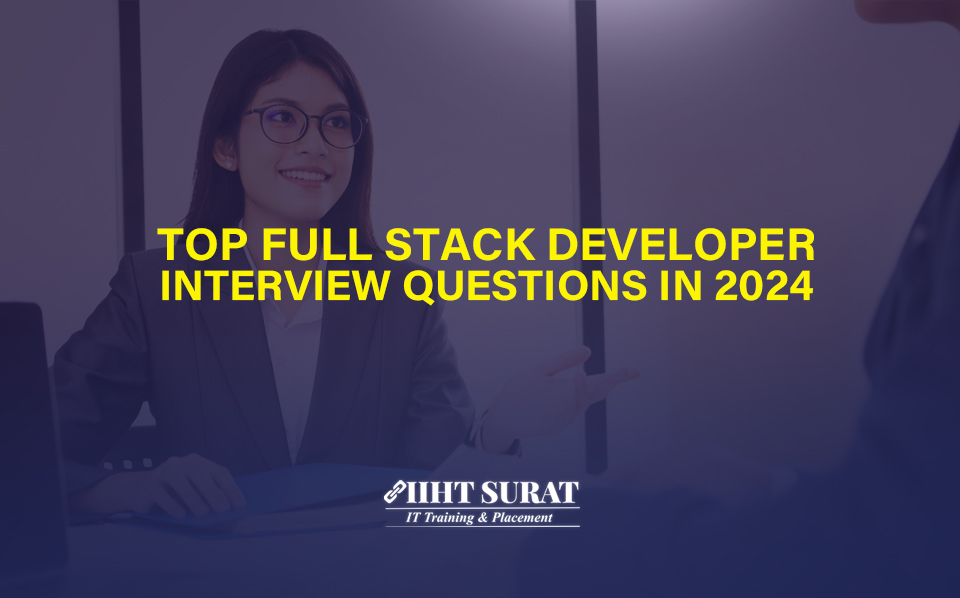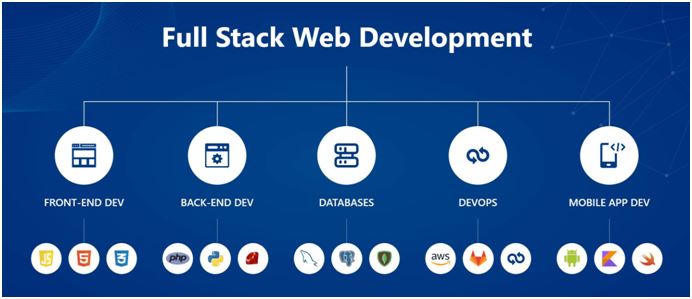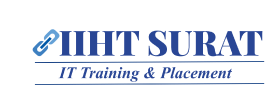Top Full Stack Developer Interview Questions In 2025

Table of Contents
Toggle1. Introduction
Let’s start with understanding the Significance of Full stack developer Interview aspects.

Know More : How To Become A Full Stack Developer
Full Stack Developers play a crucial role in web development. Interviews help assess their skills, making them essential for job seekers and employers alike.
Key Aspects | Significance |
Technical Assessment | Evaluate programming skills and knowledge |
Problem Solving | Assess problem-solving and critical thinking abilities |
Testing Your Knowledge | Test understanding of web development concepts |
Soft Skills Matter | Emphasize communication and teamwork skills |
Real-World Projects | Showcase practical experience and application |
Showcasing Your Portfolio | Highlight past work and achievements |
For Employers | Identify candidates who can contribute effectively |
Industry Evolution | Ensure candidates adapt to industry changes |
The Evolving Landscape Of Full Stack Development
2000s – The Rise of Full Stack Development :
- Full Stack Development emerged as a term to describe developers proficient in both front-end and back-end technologies.
- JavaScript and HTML/CSS were the core technologies for web development.
2010s – The Era of Frameworks and Specialization :
- JavaScript frameworks like Angular, React, and Vue.js gained prominence, simplifying front-end development.
- The demand for Full Stack Developers grew, along with the need for specialization in specific tech stacks.
- Cloud computing and mobile app development became more prevalent.
2010s – DevOps and Microservices :
- DevOps practices and tools like Git, Jenkins, and CI/CD pipelines streamlined development and deployment.
- Microservices architecture started replacing monolithic applications, offering scalability and flexibility.
- Cross-platform mobile development with React Native and other tools became a significant trend.
2020s – AI, Security, and UX Focus :
- The integration of AI and machine learning into web applications became mainstream.
- Web security and data privacy gained the utmost importance, with regulations like GDPR driving compliance.
- User experience (UX) design and collaboration with UX professionals took center stage.
2020s – Remote Work and Collaboration :
- The COVID-19 pandemic accelerated the adoption of remote work and virtual collaboration tools.
- Full Stack Developers needed strong communication and remote collaboration skills.
- The hybrid work model became more common in the industry.
2020s – Sustainability and Green Tech :
- The tech industry started prioritizing sustainability and green technology initiatives.
- Full Stack Developers began working on eco-friendly and energy-efficient applications.
2020s – Niche Roles and Continued Evolution :
- Specialized Full Stack Developer roles, such as Full Stack JavaScript Developers, Full Stack Python Developers, and Full Stack PHP Developers gained traction.
- Continuous learning and adaptation to new technologies remained essential as the web development landscape continued to evolve.
2. Preparing The Success
A. Researching the Company & Understanding the Job Description :
Before your Full Stack Developer interview, it’s essential to research the company and thoroughly understand the job description. This not only demonstrates your genuine interest in the position but also helps you tailor your responses to the company’s specific needs. Look into the company’s mission, values, and recent projects. Get a note on any tools or techniques highlighted in the Job description. This will help you in getting ready with higher competence during the Job interview.
B. Refining Your Resume :
This is one preparatory step which is completely in your hands. Your Resume is a display of your career, so to align it in relevance with the Job description is of paramount importance. Try to stick to the skill sets required as per the Job description and highlight relevant experience, also be ready with a good story to highlight challenges and how you solved them against these skills to make your profile stand genuine and strong. Emphasize your proficiency with specific technologies, showcase relevant projects, and quantify your contributions whenever possible.
3. Full Stack Developer Interview Questions
A. Front-End Development :
1. What is the Document Object Model (DOM)?
The Document Object Model (DOM) is a programming interface for web documents. It represents the page so that programs can change the document structure, content, and style. In the context of front-end development, it’s essential for interacting with and manipulating web page elements using JavaScript.
2. Explain the difference between let, const, and var in JavaScript.
Keyword | Scope | Reassignment | Block Scope | Predictability |
let | Block-scoped | Allowed | Yes | More Predictable |
const | Block-scoped | Not Allowed | Yes | Highly Predictable |
3. How do you optimize website performance?
Optimizing website performance involves various strategies, such as minimizing HTTP requests, using browser caching, optimizing images, and reducing server response times. It also includes improving code efficiency, utilizing CDNs, and adopting best practices in responsive design and lazy loading.
B. Back-End Development :
1. What is Restful architecture, and why is it important?
REST(Representational State Transfer) is an architectural style for designing networked applications. RESTful APIs use HTTP requests to perform CRUD (Create, Read, Update, Delete) operations. To promote scalability, simplicity, and loose coupling between clients and servers it is widely used.
2. How do you handle security in web applications?
Security in web applications involves practices like input validation, output encoding, authentication, and authorization. Implementing HTTPS, using secure password storage, and staying updated on security best practices are crucial.
3. What does middleware in Node.js used for?
It gives a bridging between the server and the routing application. It also has multiple applications like request processing, logging, authentication, etc.
C. Front-End Development Database Management :
1. What is the difference between SQL and NoSQL databases?
Aspect | SQL Databases | NoSQL Databases |
Data Model | Relational (Tables with rows/columns) | Non-relational (Key-Value, Document, Wide-Column, Graph, etc.) |
Schema | Structured with a fixed schema | Dynamic or schema-less |
Query Language | SQL (Structured Query Language) | Various query languages, not SQL |
Scalability | Vertical scaling (adding more resources to a single server) | Horizontal scaling (adding more servers to distribute data) |
Complex Queries | Well-suited for complex queries involving multiple tables and relationships | Better for simple to moderately complex queries |
Performance | Fast for structured data, well-optimized for joins | Fast for read-heavy workloads, scalable, but might not support complex joins |
ACID Properties | Strong ACID compliance (Atomicity, Consistency, Isolation, Durability) | May offer weaker consistency, prioritizing availability and partition tolerance (CAP theorem) |
Use Cases | Best for use with related information and processes (e.g. finance, e-commerce) | Data transformation or transformation models are ideal for real-time applications and big data (e.g. social media, IoT, content management) |
Examples | MySQL, PostgreSQL, Oracle | MongoDB, Cassandra, Redis |
2. Explain the concept of database normalization.
Database normalization is the process of organizing data in a database to reduce data redundancy and improve data integrity. It involves creating tables and relationships in a way that eliminates duplicate data and ensures consistent data storage.
3. How do you handle data migration in a live system?
Data migration in a live system requires careful planning and execution. It involves making backups, testing the migration on a staging environment, and monitoring the process closely. Tools and scripts are often used to automate the migration process to minimize downtime and data loss.
D. Front-End Development Version Control :
1. Describe what is Git, and how does it work?
If you are a developer and you want to track changes to the source code during the software development you use Git. It usually creates a codebase as a snapshot, which allows multiple developers to collaborate on a same project.
2. Describe the Git branching strategy.
A branching strategy in Git involves creating separate branches for development, features, bug fixes, and releases. Common strategies include Git Flow and GitHub Flow. These strategies help organize and manage code changes effectively, ensuring a stable and maintainable codebase.
3. How do you resolve merge conflicts in Git?
Merge conflicts occur when two or more branches have made conflicting changes to the same part of a file. To resolve conflicts, developers must manually edit the affected files, selecting which changes to keep. After resolving conflicts, the changes are committed and the merge is completed. It’s crucial to communicate with team members to ensure a smooth conflict resolution process.
4. Experienced Based Questions
A. Describe a Challenging Project :
When discussing a demanding project in a Full Stack Developer interview, choose one that highlights your problem-solving abilities and flexibility. Describe the project’s intricacy, the particular hurdles you confronted, and the strategies you employed to surmount them. Highlight the significance of your contributions, the valuable insights gained from the experience, and how it exemplifies your proficiency in efficiently handling tough assignments.
B. Handling Team Collaboration & Deadlines :
In response to questions about teamwork and meeting deadlines, highlight your collaboration skills and time management abilities. Share an experience where you successfully collaborated with a team to deliver a project on time. Describe your role in the team, how you managed responsibilities, and how you ensured effective communication and coordination among team members.
C. Adapting to New Technologies :
For questions related to adapting to new technologies, discuss an instance where you had to learn and apply new technologies or tools in a project. Explain the process of acquiring the necessary knowledge and how you integrated these technologies into the project effectively. Highlight your ability to quickly adapt and keep up with the evolving tech landscape.
5. Soft Skills And Communications
Problem-solving, Critical Thinking, and Effective Communication : These skills curates an essential observation about your holistic candidature, as these are mostly adaptive skills in nature. These shows, how you respond and how adaptive you are in the approach. Try to explain Problem solving, Critical thinking, and effective communication with a story of challenges and how you have overcame them with the strengths of these skills. You can also explain these by taking real-time project experiences from the past to add more value in the discussion.
6. Answering Interview Questions
A. Structuring Your Responses :
Structuring your responses in a Full Stack Developer interview is crucial. Use the STAR (Situation, Task, Action, Result) method. Begin by describing the situation or problem, then detail the tasks or challenges you faced. Explain the actions you took, focusing on your contributions, and finally, highlight the results or outcomes of your efforts. This structured approach helps interviewers follow your narrative and understand the impact of your actions.
B. Emphasizing Problem-Solving Skills :
In your responses, emphasize your problem-solving skills by showcasing how you addressed challenges or complex situations. Provide specific examples where you identified problems, your thought process in solving them, and the positive results achieved. Demonstrate that you are not just a developer with technical skills but also someone who can think critically and provide valuable solutions to the company’s projects and objectives. Prepare for a winning job in Full stack Development with IIHT SURAT today, visit us at https://iihtsrt.com/ or call at +91 9825841886
